If you've ever experienced chronic tension headaches, you know how debilitating they can be. Chiropractors offer several effective methods to help alleviate this discomfort, starting with spinal adjustments that improve alignment and reduce nerve pressure. But that's just the beginning—there are various techniques and lifestyle modifications that can make a significant difference in your daily life. Curious about how these approaches can transform your experience with tension headaches? Let's explore the ten ways chiropractors can provide relief.
Spinal Adjustments
When you're dealing with chronic tension headaches, spinal adjustments can be a game changer. These adjustments focus on aligning your spine, which can relieve pressure on your nervous system and improve overall function. By visiting a chiropractor, you're taking a proactive step toward addressing the root of your headaches instead of simply masking the symptoms.
During a chiropractic session, the chiropractor will evaluate your spine's alignment and mobility. They'll perform specific adjustments to correct any misalignments. This isn't just about cracking your back; it's about realigning your spine to reduce tension in the surrounding muscles and tissues.
You might find that these adjustments not only alleviate your headaches but also enhance your posture and reduce other discomforts.
Regular spinal adjustments can help restore proper function to your nervous system, which plays a vital role in how you experience pain. By improving spinal alignment, you can enhance blood flow and nerve communication, which may further decrease headache frequency and intensity.
You'll likely notice an improvement in your overall well-being after a series of adjustments. Many patients report feeling more relaxed, with less tension in their neck and shoulders, which are common contributors to tension headaches.
Consistency is key, so working with your chiropractor to establish a treatment plan tailored to your needs can lead to lasting relief. Embracing spinal adjustments could be the turning point in your journey toward a headache-free life.
Massage Therapy
While spinal adjustments play an essential role in managing chronic tension headaches, incorporating massage therapy into your treatment plan can greatly enhance your relief.
Massage therapy focuses on relaxing the muscles, improving circulation, and reducing stress, all of which can help alleviate headache symptoms. You'll find that regular sessions can lead to considerable improvements in your overall well-being.
Here are four benefits of massage therapy for chronic tension headaches:
- Muscle Relaxation: Massage helps to relieve tightness in the muscles, particularly around the neck, shoulders, and upper back. This can considerably decrease the tension that contributes to headaches.
- Improved Blood Flow: Enhanced circulation from massage therapy can promote better oxygen and nutrient delivery to the affected areas, helping to reduce pain and discomfort.
- Stress Reduction: The soothing effects of massage can help lower stress levels, a common trigger for tension headaches. By taking time to relax, you're giving your body a chance to recover.
- Enhanced Range of Motion: Regular massage can improve flexibility and mobility in your neck and shoulders, reducing the likelihood of muscle strain that can lead to headaches.
Integrating massage therapy with your chiropractic care can create a thorough approach to managing your chronic tension headaches.
You'll likely notice a difference in how you feel, as well as an increase in your overall quality of life. Don't hesitate to discuss this option with your chiropractor to tailor your treatment plan effectively.
Trigger Point Therapy
Trigger point therapy can be a game changer for those suffering from chronic tension headaches. This technique focuses on identifying and releasing tight knots in your muscles, known as trigger points. These knots can refer pain to other areas, including your head, making your headaches worse. By targeting these specific spots, you can alleviate the tension and potentially reduce the frequency and intensity of your headaches.
During a session, your chiropractor will carefully palpate your muscles to locate these trigger points. Once identified, they'll apply pressure to these areas, helping to release the built-up tension. This process may feel a bit uncomfortable at times, but it's vital for achieving relief. As the pressure is applied, you might notice a release of tension, and even a reduction in headache symptoms.
One of the great things about trigger point therapy is its adaptability. Your chiropractor can tailor the approach to your specific needs, focusing on areas that are particularly tight or painful. It's also beneficial as part of a thorough treatment plan that may include other therapies, such as massage or adjustments.
You might find some immediate relief after just one session, but ongoing treatment can lead to longer-lasting results. It's important to communicate with your chiropractor about your pain levels and any changes you experience.
With dedication to the process, you can take significant steps towards managing your chronic tension headaches effectively.
Posture Correction
Proper posture plays an essential role in preventing chronic tension headaches.
By adjusting your desk ergonomics and incorporating specific exercises for alignment, you can greatly improve your overall comfort and well-being.
Let's explore how making these changes can lead to a healthier, headache-free lifestyle.
Importance of Proper Posture
Maintaining good posture is essential for preventing chronic tension headaches. Poor posture can strain your neck and shoulder muscles, leading to discomfort and headaches. By focusing on your posture, you can alleviate some of that tension and improve your overall well-being.
Here are four key reasons to prioritize proper posture:
- Reduces Muscle Strain: Good posture helps distribute your body weight evenly, reducing strain on muscles and ligaments.
- Improves Blood Flow: Proper alignment promotes better circulation, ensuring that oxygen and nutrients reach your muscles effectively, which can help minimize headache triggers.
- Enhances Breathing: Maintaining an upright posture opens up your chest and diaphragm, allowing for deeper, more effective breathing. This can decrease tension and stress levels.
- Boosts Confidence: Good posture can enhance your self-esteem, making you feel more confident and reducing anxiety, which are both key factors in headache management.
Desk Ergonomics Tips
As you spend long hours at your desk, small adjustments can make a significant difference in your posture and overall comfort.
First, make sure your chair offers proper lumbar support. Adjust the height so your feet rest flat on the floor, with your knees at or slightly below hip level. This alignment helps reduce strain on your lower back.
Next, position your monitor at eye level, about an arm's length away. This way, you won't have to lean forward or look down, which can lead to neck and shoulder tension. If you use a laptop, consider using a separate keyboard to maintain this ergonomic setup.
Your wrists should remain straight while typing, so try to keep your keyboard at elbow height. Avoid resting your wrists on hard surfaces for extended periods.
Additionally, make sure your mouse is easily accessible, allowing your arm to stay close to your body.
Lastly, remember to take regular breaks to stretch and reset your posture. Simple adjustments in your workspace can help prevent chronic tension headaches and keep you feeling comfortable throughout the day.
Exercises for Alignment
Even with the best ergonomic setup, it's easy to develop poor posture habits over time.
To help you realign your body and alleviate chronic tension headaches, incorporating specific exercises into your routine can make a significant difference.
Here are four effective exercises for improving your posture:
- Chin Tucks: Sit or stand up straight. Gently tuck your chin in toward your neck, feeling a stretch along the back of your neck. Hold for 5 seconds and repeat 10 times.
- Shoulder Blades Squeeze: While sitting or standing, pull your shoulder blades back and together as if you're trying to hold a pencil between them. Hold for 5 seconds and repeat 10 times.
- Wall Angels: Stand with your back against a wall, feet a few inches away. Keep your arms at a 90-degree angle and slide them up and down the wall. Aim for 10 repetitions.
- Cat-Cow Stretch: Get onto all fours. Inhale as you arch your back (cow), and exhale as you round it (cat). Repeat this flow for 10 cycles.
Stretching Exercises
Incorporating regular stretching into your daily routine can greatly ease chronic tension headaches.
Focus on targeted neck and shoulder stretches to relieve tightness and improve flexibility.
Importance of Regular Stretching
Regular stretching plays an essential role in managing chronic tension headaches, and it's something you can easily incorporate into your daily routine.
By making stretching a habit, you'll help relieve muscle tightness and improve blood flow, which can greatly reduce headache frequency and intensity.
Here are four simple stretching exercises you can do at home or even at work:
- Neck Stretch: Gently tilt your head to one side, bringing your ear toward your shoulder. Hold for 15-30 seconds and switch sides.
- Shoulder Shrugs: Raise your shoulders toward your ears, hold for a few seconds, and then release. Repeat this 10 times to relieve tension.
- Chest Opener: Stand tall and clasp your hands behind your back. Lift your arms slightly while opening your chest. Hold for 15-30 seconds.
- Upper Back Stretch: Clasp your hands in front of you and round your upper back, pushing your hands away. Hold for 15-30 seconds.
Incorporating these stretches into your daily routine can provide immediate and long-term relief from chronic tension headaches.
Make it a priority, and your body will thank you!
Targeted Neck and Shoulder
Stretching your neck and shoulders can greatly enhance your overall relief from chronic tension headaches. When you experience tightness in these areas, it can contribute considerably to headache discomfort. By incorporating targeted stretching exercises, you help release that tension and improve blood flow, which may alleviate headache symptoms.
Start with simple neck stretches. Gently tilt your head to one side, bringing your ear toward your shoulder, and hold for 15-30 seconds. Switch sides and repeat.
Next, practice shoulder rolls: lift your shoulders toward your ears, then roll them back and down in a circular motion. This can relieve built-up tension and promote relaxation.
Another effective stretch involves clasping your hands behind your back, straightening your arms, and gently lifting them upward while keeping your shoulders relaxed. Hold this position for 15-30 seconds to open up your chest and reduce shoulder tightness.
Don't forget to incorporate gentle neck rotations as well. Slowly turn your head to one side, hold for a few seconds, then rotate to the other side.
Performing these exercises regularly can help keep your neck and shoulders flexible, contributing to long-term relief from tension headaches.
Daily Routine Incorporation
Finding time to incorporate stretching exercises into your daily routine can make a significant difference in managing chronic tension headaches.
By committing just a few minutes each day, you can help alleviate muscle tension and improve your overall well-being.
Here are some effective stretches to evaluate:
- Neck Stretch: Sit or stand up straight, gently tilt your head to one side, and hold for 15-30 seconds. Switch sides and repeat. This eases tightness in the neck muscles.
- Shoulder Rolls: Stand or sit with your back straight. Roll your shoulders forward in a circular motion for 10 repetitions, then reverse and roll them backward. This helps release tension in your shoulders.
- Upper Back Stretch: Interlace your fingers and reach your arms forward while rounding your upper back. Hold for 15-30 seconds. This opens up your upper back and alleviates pressure.
- Chest Opener: Stand with your arms behind you, clasp your hands, and gently pull your shoulders back. Hold for 15-30 seconds to stretch your chest and counteract forward posture.
Nutritional Guidance
How can the right nutrition alleviate chronic tension headaches? Proper nutrition plays a crucial role in managing headaches, as it directly impacts your overall health and well-being. When you fuel your body with the right nutrients, you can reduce inflammation, maintain stable blood sugar levels, and support peak brain function.
Start by incorporating anti-inflammatory foods into your diet. Leafy greens, berries, fatty fish, and nuts provide essential omega-3 fatty acids and antioxidants that help combat inflammation. These foods can help lessen the severity and frequency of your tension headaches.
Stay hydrated. Dehydration is a common trigger for headaches, so make sure you're drinking enough water throughout the day. Aim for at least eight 8-ounce glasses, but adjust based on your activity level and climate.
Pay attention to your magnesium intake. Magnesium deficiency has been linked to headaches, so consider adding foods rich in this mineral, such as spinach, avocados, and whole grains. You might also discuss magnesium supplements with your chiropractor or healthcare provider if you're struggling to get enough from your diet.
Lastly, monitor your caffeine consumption. While a small amount can alleviate headaches for some, excessive caffeine can lead to withdrawal headaches. Balance is key.
Heat and Cold Therapy
When you're dealing with chronic tension headaches, heat and cold therapy can be game changers.
Applying heat can relax tight muscles, while cold compresses help reduce inflammation and numb pain.
Combining both methods might just provide the relief you need to manage your headaches more effectively.
Benefits of Heat Application
Heat application can be a powerful tool in managing chronic tension headaches, offering relief through increased blood flow and muscle relaxation. When you apply heat, it can effectively soothe tight muscles and reduce discomfort.
Here are some key benefits you might experience:
- Improved Circulation: Heat enhances blood flow, delivering more oxygen and nutrients to affected areas, promoting healing.
- Muscle Relaxation: Applying heat helps relax tense muscles, which can alleviate the pressure contributing to your headache.
- Pain Relief: The warmth can reduce pain signals sent to your brain, providing immediate comfort and easing your headache.
- Stress Reduction: Heat application can promote a sense of calm and relaxation, which is essential in managing tension headaches linked to stress.
Using heat therapy, whether through a warm towel or a heating pad, can be a simple yet effective method to help you manage chronic tension headaches.
Just remember to use it safely, ensuring the heat isn't too intense, and always consult with your chiropractor for personalized advice on your treatment plan.
Cold Compress Techniques
Using cold compress techniques can provide effective relief for chronic tension headaches by numbing the affected area and reducing inflammation. When you apply a cold compress, it constricts blood vessels, which can help minimize swelling and discomfort. This technique is simple and can be done at home.
To use a cold compress, grab a clean cloth or towel and soak it in cold water or wrap ice cubes in it. Make sure you don't apply ice directly to your skin to avoid frostbite. Place the compress on your forehead or the back of your neck for about 15 to 20 minutes. You can repeat this process several times a day, depending on your comfort level.
If you prefer, you might opt for a gel pack that can be chilled in the freezer. Just remember to keep a barrier, like a thin cloth, between the pack and your skin.
Cold compresses can be especially helpful after a long day at work or during stressful moments when headaches tend to strike. Incorporating this technique into your routine can help alleviate the discomfort associated with chronic tension headaches.
Combination Therapy Approaches
Cold compresses can be a great starting point for managing chronic tension headaches, but combining heat and cold therapy can enhance your relief even further.
By alternating between heat and cold, you'll tackle the headaches from multiple angles, promoting better blood flow and reducing muscle tension.
Here's how you can effectively use combination therapy:
- Start with a cold compress: Apply it to your forehead or the back of your neck for 15-20 minutes. This can numb the area and reduce inflammation.
- Switch to heat therapy: After the cold treatment, use a warm towel or heating pad on your neck and shoulders. This helps relax tight muscles and improves circulation.
- Alternate as needed: You can continue alternating between cold and heat every 20 minutes. Just listen to your body and see what feels best.
- Stay hydrated: Drink plenty of water during this process. Proper hydration can also help alleviate headache symptoms.
Lifestyle Modifications
Making some simple lifestyle modifications can greatly reduce the frequency and intensity of chronic tension headaches. Start by paying attention to your posture throughout the day.
Whether you're sitting at a desk or standing, maintaining a neutral spine can minimize the strain on your neck and shoulders, which often contribute to headaches. Consider adjusting your workstation to guarantee your computer screen is eye-level, and take regular breaks to stretch and move around.
Next, be mindful of your hydration. Dehydration is a common trigger for headaches, so drink plenty of water throughout the day. Aim to consume at least eight 8-ounce glasses of water daily, and increase your intake if you're active or in a hot environment.
Your diet plays an essential role, too. Eating regular, balanced meals can help stabilize your blood sugar levels, reducing the risk of headaches. Incorporate a variety of fruits, vegetables, whole grains, and lean proteins into your meals.
Avoid skipping meals and limit your intake of caffeine and alcohol, as these can exacerbate headache symptoms.
Finally, prioritize sleep. Establish a consistent sleep schedule by going to bed and waking up at the same time each day. Aim for 7 to 9 hours of quality sleep per night.
Creating a calming bedtime routine can signal your body that it's time to unwind. By making these lifestyle adjustments, you'll likely find a significant decrease in the occurrence of chronic tension headaches, leading to a more comfortable and enjoyable life.
Stress Management Techniques
Stress management techniques are essential for alleviating chronic tension headaches, as stress often acts as a considerable trigger. By incorporating effective strategies into your daily routine, you can reduce stress levels and minimize the frequency and intensity of your headaches.
Here are four stress management techniques you can try:
- Deep Breathing Exercises: Take a few minutes each day to practice deep breathing. Inhale slowly through your nose, hold for a moment, then exhale through your mouth. This helps calm your nervous system and reduce muscle tension.
- Mindfulness Meditation: Spend time each day focusing on the present moment. Find a quiet space, close your eyes, and concentrate on your breath or an object in front of you. This can notably decrease anxiety and improve your overall sense of well-being.
- Regular Physical Activity: Engage in regular exercise, whether it's walking, yoga, or any physical activity you enjoy. Exercise releases endorphins, which can elevate your mood and reduce stress.
- Time Management: Organize your tasks and prioritize them effectively. Break larger tasks into smaller, manageable steps. This way, you can avoid feeling overwhelmed and reduce stress related to deadlines.
Ongoing Maintenance Care
After implementing stress management techniques, it's important to focus on ongoing maintenance care to keep tension headaches at bay. Regular chiropractic visits can play a vital role in managing your overall well-being. These appointments aren't just about addressing immediate pain; they're designed to maintain spinal health and reduce the likelihood of future headaches.
During your maintenance care visits, your chiropractor will assess any changes in your posture, muscle tension, and overall spinal alignment. This proactive approach helps identify potential issues before they escalate into painful headaches. You'll also receive personalized advice on exercises and stretches tailored to your specific needs. Incorporating these into your daily routine can greatly enhance your results.
Being consistent with your maintenance schedule is key. Whether it's once a month or every few weeks, adhering to your chiropractor's recommendations helps keep your body balanced. You might also explore additional therapies, like massage or acupuncture, to complement your chiropractic care. These holistic approaches can further alleviate muscle tension and promote relaxation.
Lastly, don't forget to communicate openly with your chiropractor about any changes you experience. This ongoing dialogue will guarantee your treatment plan remains effective and tailored to your evolving needs.
Conclusion
Incorporating these chiropractic methods can considerably reduce your chronic tension headaches. By focusing on spinal adjustments, massage, and trigger point therapy, you can relieve pain and improve your overall well-being. Don't forget the importance of posture correction, stretching, and lifestyle changes. Combine these with stress management techniques and regular maintenance care for lasting relief. Take charge of your health, and you'll find yourself enjoying a headache-free life more often.



